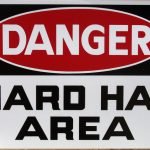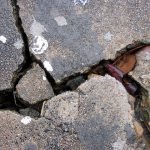New York Labor Law protects construction workers and places liability on owners and contractors under certain circumstances. Plaintiffs injured in a construction accident often bring claims under multiple sections of the Labor Law, as in Daniel v 384 Bridge St. LLC.
 The plaintiff alleged he was injured when he stepped on the edge of a piece of plywood covering a hole in the floor while walking through the construction site. The plaintiff filed suit against the owner of the construction project, the construction manager, a subcontractor hired to perform concrete work, a subcontractor hired to perform carpentry, and his employer, which had been hired to do the window work. The plaintiff filed claims for common law negligence and violations of New York Labor Law §§ 200, 240(1), and 241(6), and his wife asserted a claim for loss of consortium. The defendants moved for summary judgment.
The plaintiff alleged he was injured when he stepped on the edge of a piece of plywood covering a hole in the floor while walking through the construction site. The plaintiff filed suit against the owner of the construction project, the construction manager, a subcontractor hired to perform concrete work, a subcontractor hired to perform carpentry, and his employer, which had been hired to do the window work. The plaintiff filed claims for common law negligence and violations of New York Labor Law §§ 200, 240(1), and 241(6), and his wife asserted a claim for loss of consortium. The defendants moved for summary judgment.
Pursuant to § 240(1), known as the Scaffold Law, contractors and owners must provide certain safety devices, including scaffolding, hoists, and ladders, to protect workers. The court granted the motion as to the § 240(1) claim, finding that the section did not apply because there was no allegation that an elevation or gravity-related risk contributed to the injury.
Section 200 codifies the common law duty of the owner or general contractor to provide a safe place to work for construction workers. Claims can arise either from an alleged defect or a dangerous condition on the premises or from the means and methods by which the work was performed. An owner or general contractor is not liable for an injury arising from a contractor’s means and methods if the owner or general contractor does not have supervisory control over the operation. If, however, the injury is caused by a defect or dangerous condition on the premises, the owner or general contractor is liable if it created the condition or had actual or constructive notice of it.
The court found that the cause of the accident was not the way the plaintiff or his employer performed the work, but the unsecured plywood, which was an existing condition on the property. It found that neither the plaintiff nor his employer was involved in installing the plywood. The defendants based their argument for summary judgment on the lack of supervisory control over the plaintiff’s work, but supervisory control is not required in a claim arising from an existing dangerous condition. The court rejected the defendant’s argument that the condition was open and obvious, finding the defendants had not established that to be the case as a matter of law. The court denied the motion for summary judgment as to the § 200 claim.
For a claim under § 241(6), the plaintiff must show that his injuries were proximately caused by a violation of a New York Industrial Code provision. The provision must provide a concrete standard. The court looked specifically at the claim predicated on 12 NYCRR § 23-1.30, which requires “[i]llumination sufficient for safe working conditions” at construction sites. This section further provides that there shall be at least 10-foot candles where people are working and at least five-foot candles where people must pass. Case law has held that claims based on this section must be sufficient to create an inference that the lighting was below the standard, and allegations that the area was dark are insufficient. The court found that the plaintiff had only provided only conclusory allegations in support of the claim, stating that the lighting was “poor that morning” and that there was “a lighting problem” at the site.
The plaintiff also made a § 241(6) claim based on 12 NYCRR § 23-1.7(e)(1), which requires passageways to be kept free from debris and any conditions that could cause tripping. “Passageway” has been interpreted as a defined walkway between discrete areas. The court found no evidence that the plaintiff was walking through a passageway at the time of his accident. Although the plaintiff said he was walking through a doorway, the court found that the record indicated that the interior walls had not yet been erected, so there could not have been a door on the 10th floor, where the plaintiff tripped.
Although the court granted summary judgment on the §§ 240(1) and 241(6) claims, the plaintiff will be able to proceed with the claim under § 200. To succeed on that claim, the plaintiff will have to show that the defendants either created the dangerous condition or had actual or constructive knowledge of it.
New York construction accident attorney Nicholas Rose is highly familiar with the New York Labor Law and understands construction accident claims. If you have been injured in a construction accident, we can help you.
The Law Offices of Nicholas Rose, PLLC offers free consultations. Call 1-877-313-7673.
More Blog Entries:
New York Construction Site Fall Case Survives Summary Judgment Motions by All Defendants, June 13, 2016, New York Injury Lawyer Blog






